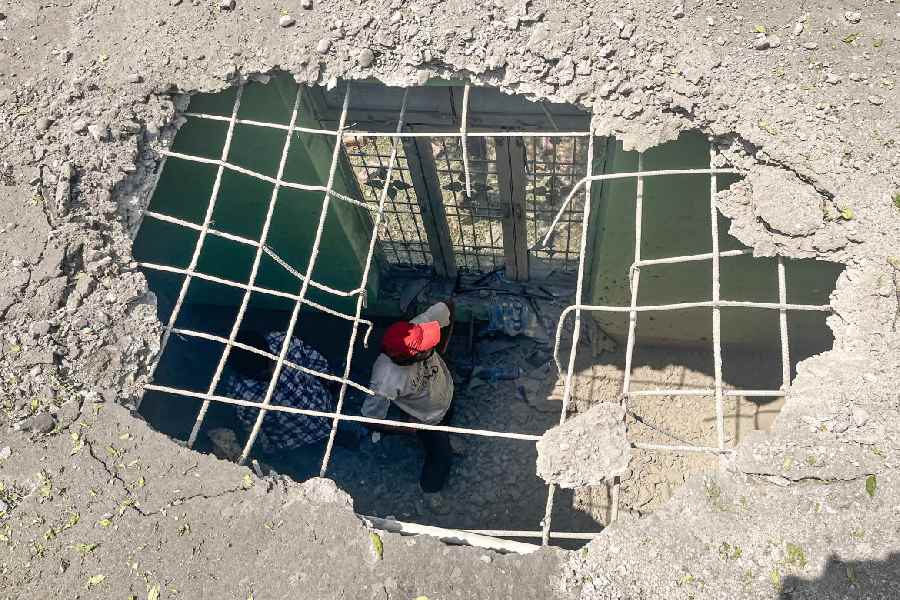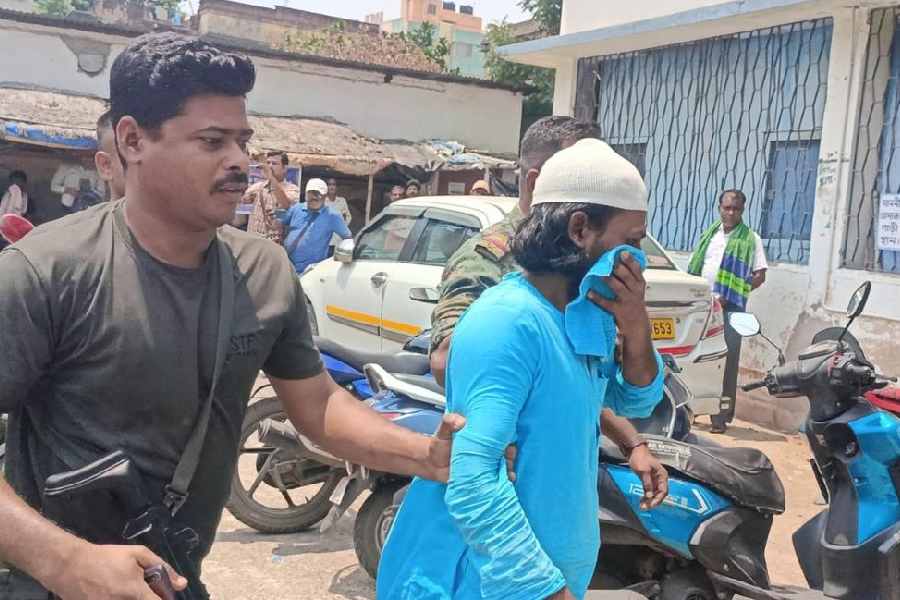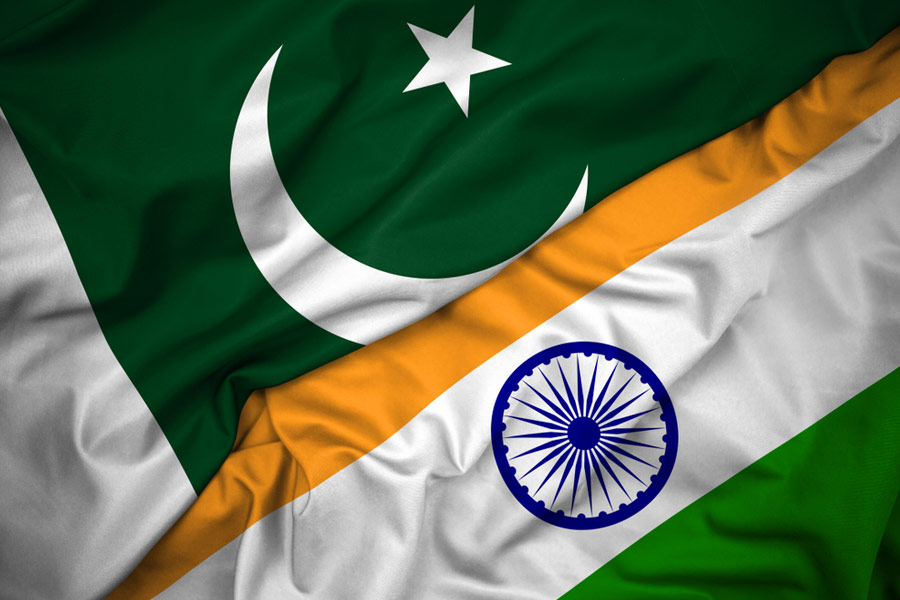|
|
In an insightful essay entitled “Appearances”, John Berger — described variously as “storyteller, essayist, novelist, screenwriter, dramatist and critic” — argues persuasively that the camera does not lie; photographs are made to lie by “elaborate tampering, collage and re-photographing” — and today, of course, by photoshopping. In the early days of photography, ‘lying’ was often achieved by adding an extra prop or even a human figure to lend credibility; Samuel Bourne and Felice Beato were known to have used this ruse with impunity. Some may argue that elaborate backdrops too are complicit in this continuum of dissembling, of trying to create separate realities. There was, however, a subtle paradox between the camera as the new truth-machine and the choice of backdrops that had nothing to do with the ‘truth’ of the client’s everyday existence. That few chose to see it as such was perhaps a reflection of the times.
In the present visual age, the power of the photograph is further limited when it comes to lived experience. An X-ray photograph of a wounded leg can tell the “utter truth” of the existence or otherwise of a fracture; but, asks Berger, does it tell the “utter truth” about a person’s experience of hunger or of a feast? Subjective interpretation slips in as some imagine the unbearable struggle to survive in the eyes of the street child who peers into a restaurant window; other viewers may be more interested in fantasizing about the delicacies laid out on the table, just as they would laugh contemptuously at the post-feast large man stroking his protuberance with deep affection. Kinder souls may feel a twinge of sympathy.... Here, photographs are asking viewers to read them any which way; very simplistically, there appears to be a difference between photographs used as an aid to science and medicine and those taken as social, cultural and political commentary. Not that the aid-to-science sort of photograph is free from subjective interpretation either; while there should be no doubt about a fractured femur when the X-ray appears, can one deny that photographs of the galaxy taken from the very same spot by a range of cameras allow scope for subtle differences of opinion and scientific hair-splitting? Or that different people can read the same photograph differently?
At a time when the camera was regarded as one of the touchstones of the new industrial age, colonial photographers are unlikely to have had much inclination to indulge viewers’ diverse opinions. One of their tasks was to record the physiognomy of the ‘natives’ and present these as the images of various ethnic types. There was, of course, a congruence between the interest of anthropology and that of colonizing powers. A fundamental belief in cultural difference influenced the ideology of both, the Lamprey’s grid being a suitable invention to bear out the physical differences among races. Subjects were made to stand before a large frame from which hung silk threads formed into two-inch squares, and then photographed, often in profile. Comparisons were made between such images and those of strapping six-foot models from the land of the rulers. Here, scientific enquiry was not without racial prejudice.
Over time, however, differences in opinion led to healthy debates on photographic practice and the colonial camera. In Photography and Anthropology, the social anthropologist, Chris Pinney, draws attention to the changing — if at times somewhat self-conscious — discourse around the anthropological photograph. When, by the 1870s, the British anthropologist, E.B. Tylor, was enthusiastically applauding the camera’s role, writing that photographs were not “mere book decorations” but rather “object lessons”, he was moving from an obsession with the physical body to the wider notion of different cultures. A couple of decades later, Sir Everard im Thurn imperiously declared that he was not for the mug-shot genre so popular then — humans were not to be photographed in a manner not dissimilar to “badly stuffed birds and animals” — but rather they were to be represented as active, working bodies. His photographs have a certain dynamism, unlike the huge corpus of material developed by many other anthropologists still committed to what Pinney calls “an austere colonial sensibility”, reflected in an ‘objective’ representation of the subject people.
The real break came in the 1920s when Bronislaw Malinowski — regarded as the founder of modern British anthropology — sought to fracture the subject-viewer divide by asking the reader to ‘imagine’ being on distant islands amidst Trobrianders; he used the camera extensively, often inserting himself into images; as the “self-mythologizing perfector of ‘participant-observation’” that has influenced generations of fieldwork-based researchers, he had to be seen to be ‘there’. Yet, even his best attempts could not do away with the divide implicit in the colonial enterprise. In this deftly composed photograph, the white male ethnographer stands with his hands on his hips — a favourite posture with countless colonial administrators — his head just that bit tilted downwards as he looks imperiously at the ‘man in a wig’, a sorcerer of repute. The colour of an overclad Malinowski’s skin, his clothes and even his boots is in direct contrast to the natives, their ‘undress’ and the bored look of some. The photograph has the quality of a theatrical scene, and that clearly was the intention: the outsider engages with the insiders and tries hard to be no longer the superior observer and recorder alone.
That being photographed was not always readily accepted by the subject/‘native’ is discussed at some length by Pinney, pointing out that recording discomfiture became almost a genre in the photography of the times. Coercive techniques were not unknown, reminding us of Roland Barthes’ belief that photography causes “disturbance”; the author also shows us how, as late as the 1940s, Margaret Mead and Geoffrey Bateson chose to ignore this discomfiture, photographing without asking for permission from their subjects and often using “an angular viewfinder to record their subjects unaware”.
Contemporary anthropological practice diligently seeks to distance itself from such lack of sensitivity of its forebears: Pinney chooses a particularly telling image where the Australian anthropologist, Nicolas Peterson, overlays an early 20th-century image of photographers avidly zeroing in on a secret aboriginal men’s ceremony with a black rectangle. Thus we see a group of hungry, paparazzi-like photographers — but are no longer privy to the focus of their interest. The new imaging reflects an acceptance of what Peterson calls a “changing photographic contract” where deference to aboriginal sensibilities replaces an earlier coercive regimen. Such paradigm shifts in the role of the photograph in anthropology lead us logically to the core of Pinney’s arguments. Mindful of Paul Rabinow’s angst at being the ‘rich’ American anthropologist living in a ‘poor’ village hut in Morocco, (I would add parenthetically that his unease has been experienced by many Indian field workers, thereby drawing attention to another dilemma, that of studying sub-cultures within one’s own culture), Pinney carries over this feeling to the domain of the visual.
These debates have acquired a distinct edge in the age of digital photography and the three-way relationship — that between the subject and the photographer and later, between both and the viewer — is made more complex with each new intervention; the viewer often becomes the pseudo-photographer, ‘tampering’ at will with images that find their way to her desk through cyberspace. As multiple readings and sub-narratives around a photograph grow, the viewer often loses sight of the original provenance of the photograph and its historic association with truth-telling. Berger’s photograph might not lie — but its association with truth becomes increasingly fragile in a technologically vibrant world of competing images and image-stories.











